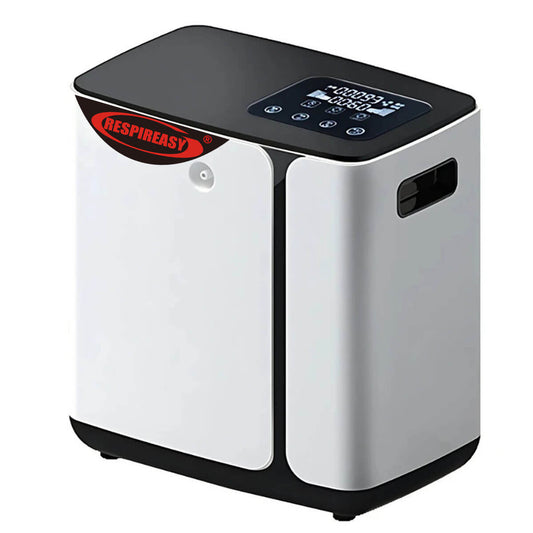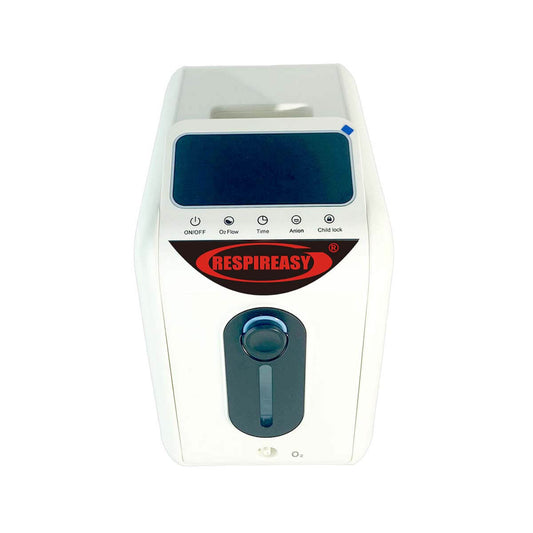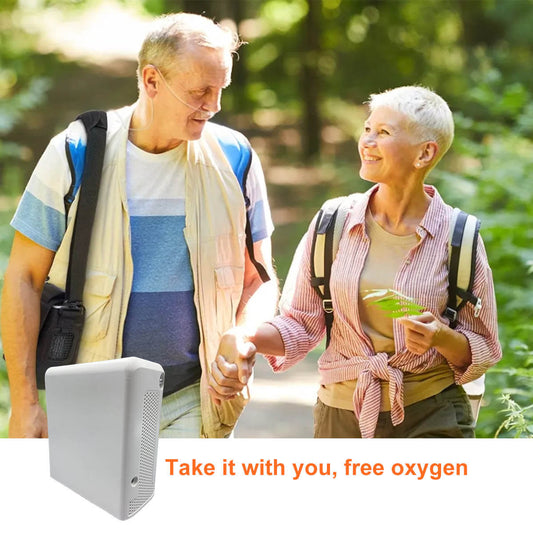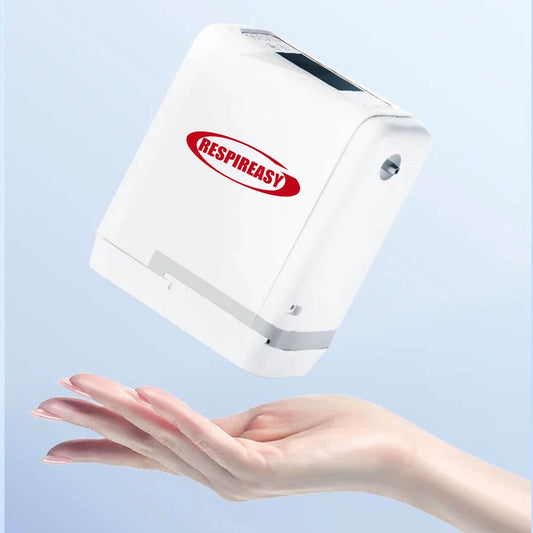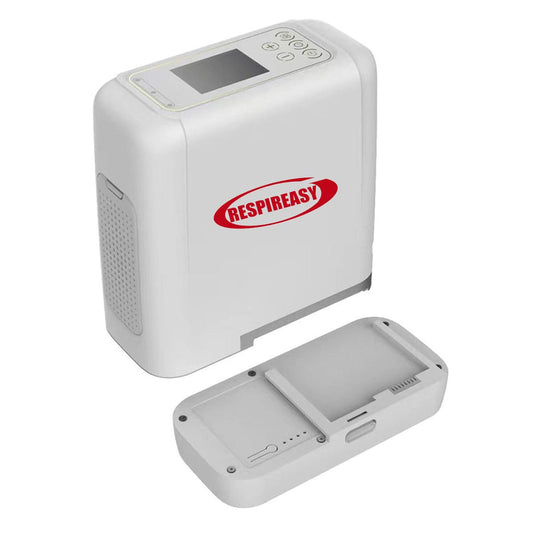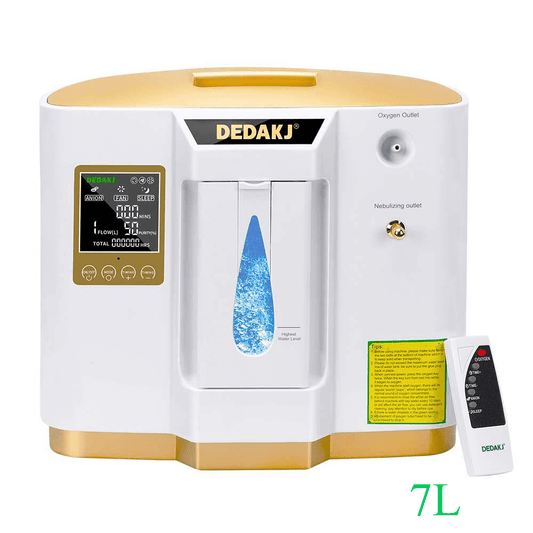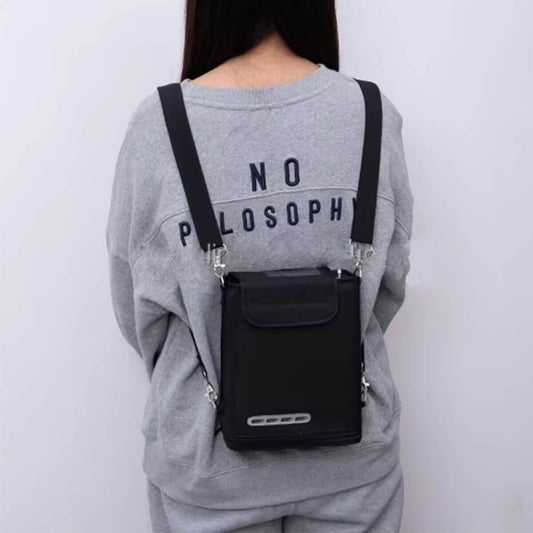Professional advice on purchasing an oxygen concentrator
An oxygen concentrator is a medical device for people with respiratory insufficiency (hypoxemia). It works by concentrating oxygen in the air by removing nitrogen.
In medical settings, oxygen therapy is used to improve and stabilize blood oxygen saturation levels.
The oxygen concentrator consists of the following parts:
- The oxygen machine equipment itself, i.e. the concentrator, consists of a housing with a compressor, filter, water tank, etc.
- Consumables such as oxygen tubes, adult or pediatric oxygen cannulas, oxygen masks, etc.

What criteria should you consider when choosing an oxygen concentrator?
There are five main criteria to consider when purchasing an oxygen concentrator: oxygen concentration rate, flow rate, portability, noise level, and power supply.
- Oxygen concentration:This ratio must be between 87% and 99%.
- Flow rate: An oxygen flow rate of 2 L/min is usually sufficient for use in home care oxygen concentrators. However, some conditions require higher flow rates and it is possible to find concentrators up to 10L/min.
- Portability:There are fixed oxygen concentrators and portable oxygen concentrators. Portable models are often preferred because they can be easily transported from one hospital room to another. However, stationary models usually have larger water tanks.
- Noise level: The noise level of an oxygen concentrator is typically between 31 decibels and 60 decibels, which is equivalent to a quiet conversation or normal sounds in a calm environment. Some brands make models that are even quieter.
- Type of power supply: Oxygen concentrators are usually connected to the electrical grid for continuous use. This type of device does not consume a lot of electricity. Other models are battery powered.
Is it worth buying an oxygen concentrator?
Oxygen concentrators have several advantages over liquid oxygen bottles: they ensure oxygen everywhere, are easy to install, and are less expensive.
- SupplySource: The supply source for oxygen concentrators is ambient air, available everywhere. This makes it possible to produce oxygen wherever and whenever possible. This is an undeniable advantage over liquid oxygen bottles that are regularly emptied quickly and require ongoing refill or replacement services to ensure patient treatment. For home oxygen therapy using oxygen bottles, patients may live with the anxiety of being unable to replenish oxygen on time and running out of oxygen. With an oxygen concentrator, you can ensure you never run out of oxygen.
- Installation, Portability, Weight: Oxygen concentrators do not require any special installation and can be easily transported if you choose a portable model. When walking, patients can also carry a portable oxygen tank (stroller), but their autonomy is limited, which is why some patients prefer to stay at home or rarely go out if they use an oxygen tank. Oxygen concentrators are also lighter (2 to 3 kg) than oxygen bottles, which can weigh 4 kg or more, depending on fill level.
- Low energy consumption: Oxygen concentrator equipment consumes very little electricity. Some models can also run on batteries, but depending on their autonomy and the size of the battery, these devices may be heavier and difficult to carry.
- Cost: Another major advantage of an oxygen concentrator is its cost, which is significantly less than the cost of an oxygen bottle. Oxygen concentrators also only discharge oxygen when the patient is in the inhalation phase, while oxygen cylinders continuously discharge oxygen (during the inhalation and expiration phases), which is less efficient.
- No training required: The oxygen concentrator is designed for caregivers and users who do not require any special training to operate it.


>>>>
>>>>
What precautions should be taken when using an oxygen concentrator?
Some precautions should be taken when using an oxygen concentrator, including regular filter cleaning and spot-checking the concentration.
- Clean filters regularly: Cleaning your equipment's filters regularly can reduce the risk of fire. No special training is required to learn how to properly clean equipment. Simply remove, wash, dry and replace the filter and pre-filter.
- Spot checks of oxygen concentration: Spot checks of oxygen concentration are very important to ensure the effective operation of the equipment. If the concentration is very low, there may be a kink in the pipe that delivers oxygen to the monitor, in which case the pipe or sensor must be repaired. The problem may also come from the filter, and if this is the case, the filter will need to be replaced.


What are the indications and potential side effects of oxygen concentrators?
The following are indications and potential side effects of oxygen concentrators:
- Indications: Oxygen concentrators are recommended for COPD (chronic obstructive pulmonary disease), asthma, chronic bronchitis, emphysema, cystic fibrosis, pulmonary fibrosis, congestive heart failure, pneumonia, pneumothorax (collapsed lung), Lung cancer and sleep-disordered breathing.
- Potential side effects include skin irritation or nasal dryness, but these are associated with long-term use of the device
Where and when can an oxygen concentrator be used?
- Oxygen concentrators can be used anywhere as long as the supply source is ambient air. Can be used at home, in public places, in the car or even on an airplane (with medical certificate). Regarding this last point, please note that some countries, such as the United States, have specific regulations.
- With daily oxygen administration, this type of device can be used at any time, including at night, but only after studying the patient's sleep and using a low-noise model.
Do I need a prescription to use an oxygen concentrator?
- Oxygen concentrators are considered a medical device and therefore must be prescribed by a specialist before use.
- This type of prescription may be prescribed by a respiratory physician, a pediatrician with expertise in chronic respiratory failure in children, a physician at the Cystic Fibrosis Resource and Skills Center, or a physician at the Pulmonary Hypertension Skills Center.
How long is the service life of an oxygen concentrator?
- Depending on the type of oxygen concentrator (stationary or portable) and model, the instrument lasts an average of 4 to 7 years. This type of equipment usually comes with a warranty.

DEDAKJ Oxygen Concentrator
Established in 1953, with ISO, CE, RoHS and PSE certifications, with medical oxygen concentrators and home oxygen breathing machines as the core, DEDAKJ is the top-rated oxygen concentrator supplier,offers the mini &small oxygen concentrator, household portable oxygen making machine, the medical grade 10 liter oxygen concentrator for hospital oxygen therapy &clinics oxigenoterapia. More The DEDAKJ Oxygen Concentrator store website offers the DEDAKJ original oxygen accessory oxygen parts & components. All DEDAKJ oxygen machine oxygen concentrators concentrador de oxigeno and original oxygen accessories parts can be bought here.
Buy online the best quality portable oxygen concentrator in DEDAKJ oxygen concentrator store.
Buy DEDAKJ Oxygen Concentrator: https://dedakjoxygenconcentrators.com/






























